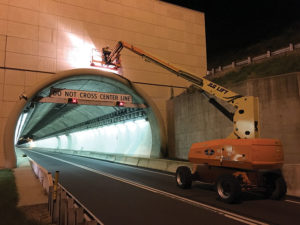One of the most frequently used “buzz words” in the media lately is Infrastructure, a term used to represent many different things to many different people. One definition of Infrastructure is “the basic physical and organizational structures and facilities (e.g., buildings, roads, and power supplies) needed for the operation of a society or enterprise.”
Infrastructure Elements
For structural engineers, infrastructure can include the following:
Bridges
- Highway
- Railroad
- Transit
Tunnels
- Highway
- Railroad
- Transit
Hydraulic Structures
- Dams
- Spillways
- Boat Locks
- Weirs
- Culverts
- Pump Stations
- Wharves & Piers
Pipeline Structures
- Petroleum
- Water
- Wastewater
Storage Tanks
- Water
- Petroleum
Towers
- Communication
- Transmission Power Lines
- Wind Turbines
Buildings
- High-Rise
- Stadiums
- Facades/Chimneys
- Convention Centers
- Coliseums
- Theaters
- Monuments
The list above is by no means exhaustive but serves as a point of discussion. This article will focus on just a few of these elements.
The American Society of Civil Engineers’ (ASCE) most recent Report Card for America’s Infrastructure, issued in 2013, gives an overall grade of D+ across 16 categories.
In the 1950s, structures and roadways were designed for a lifespan of 50 years. It is no wonder that 20% of the nation’s 900,000+ miles of interstate and major roads are in need of resurfacing or reconstruction, and 25% of the nation’s 600,000+ bridges are either structurally deficient or functionally obsolete.
Focusing solely on the country’s highway bridges, one out of nine is rated as structurally deficient and the average age of the 607,380 bridges is 42 years. The Federal Highway Administration (FHWA) estimates that $20.5 billion would need to be invested annually in eliminating the nation’s bridge backlog by 2028, while only $12.8 billion is spent each year.
As far as roadways, 42% of America’s major urban highways remain congested. The FHWA estimates that $170 billion in capital investment would be needed annually to improve conditions and performance, while only $91 billion is spent each year.
Highway tunnels were not addressed in the ASCE Report Card or the National Bridge Inspection Standards (NBIS); however, the National Tunnel Inspection Standards (NTIS), effective as of August 13, 2015, established regulations for the uniformity of tunnel inspections similar to the NBIS for bridges. The initial inventory of highway tunnels resulted in a total of 473 tunnels identified by owners across the country. These highway tunnels will have initial inspections performed in accordance with the new NTIS regulations to determine their baseline condition for future asset management. In addition to the structural elements and civil elements, many tunnels feature mechanical systems (i.e. ventilation), electrical systems (i.e. lighting), life safety systems (i.e. fire detection and protection), and additional components (signage, SCADA, etc.), which are now being inventoried and inspected every 24 months. Stay tuned for the FHWA report of findings that will follow the uploading of data into the newly created National Tunnel Inventory resulting from the completion of the initial tunnel inspections by August 13, 2017.
For structural engineers, maintaining the nation’s infrastructure presents a challenge in the face of limited fiscal resources as well as vacillating priorities at the local, state, and federal levels of government. As such, asset maintenance programs are helping to inform asset management initiatives nationwide as owners and maintainers of infrastructure optimize their limited resources. Repair and rehabilitation strategies appear to remain the major focus of funding programs, with the occasional new design of replacement structures the exception to the rule.▪

